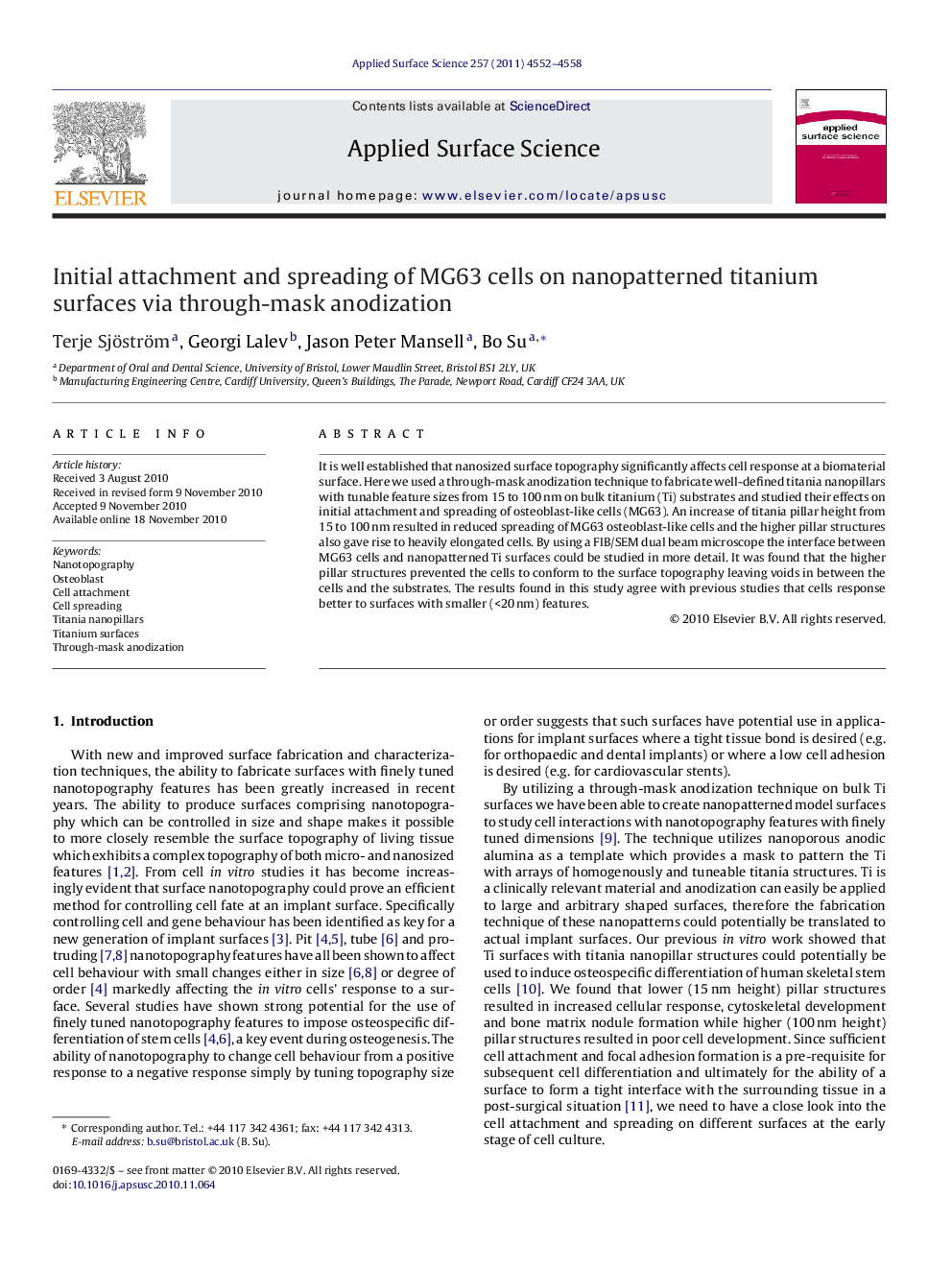| Article ID | Journal | Published Year | Pages | File Type |
|---|---|---|---|---|
| 5367933 | Applied Surface Science | 2011 | 7 Pages |
It is well established that nanosized surface topography significantly affects cell response at a biomaterial surface. Here we used a through-mask anodization technique to fabricate well-defined titania nanopillars with tunable feature sizes from 15 to 100Â nm on bulk titanium (Ti) substrates and studied their effects on initial attachment and spreading of osteoblast-like cells (MG63). An increase of titania pillar height from 15 to 100Â nm resulted in reduced spreading of MG63 osteoblast-like cells and the higher pillar structures also gave rise to heavily elongated cells. By using a FIB/SEM dual beam microscope the interface between MG63 cells and nanopatterned Ti surfaces could be studied in more detail. It was found that the higher pillar structures prevented the cells to conform to the surface topography leaving voids in between the cells and the substrates. The results found in this study agree with previous studies that cells response better to surfaces with smaller (<20Â nm) features.
Research highlightsⶠNanotopography is important in modulating the behaviour of cells. ⶠThe attachment and spreading of osteoblast-like MG63 cells can be controlled by the dimension of nanodots on Ti substrates. ⶠThe results could lead to improved osseointegration of dental and orthopaedic implants.
